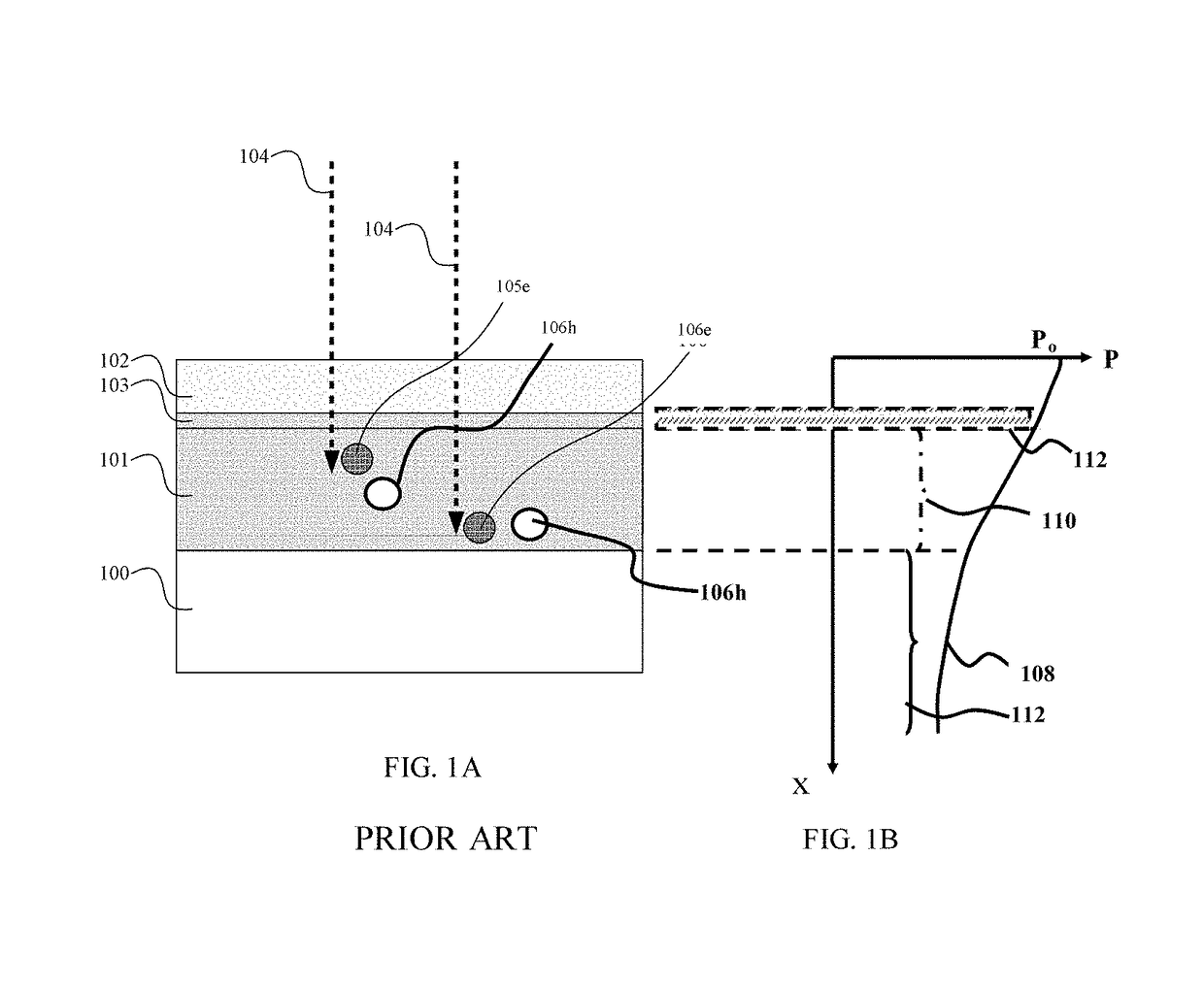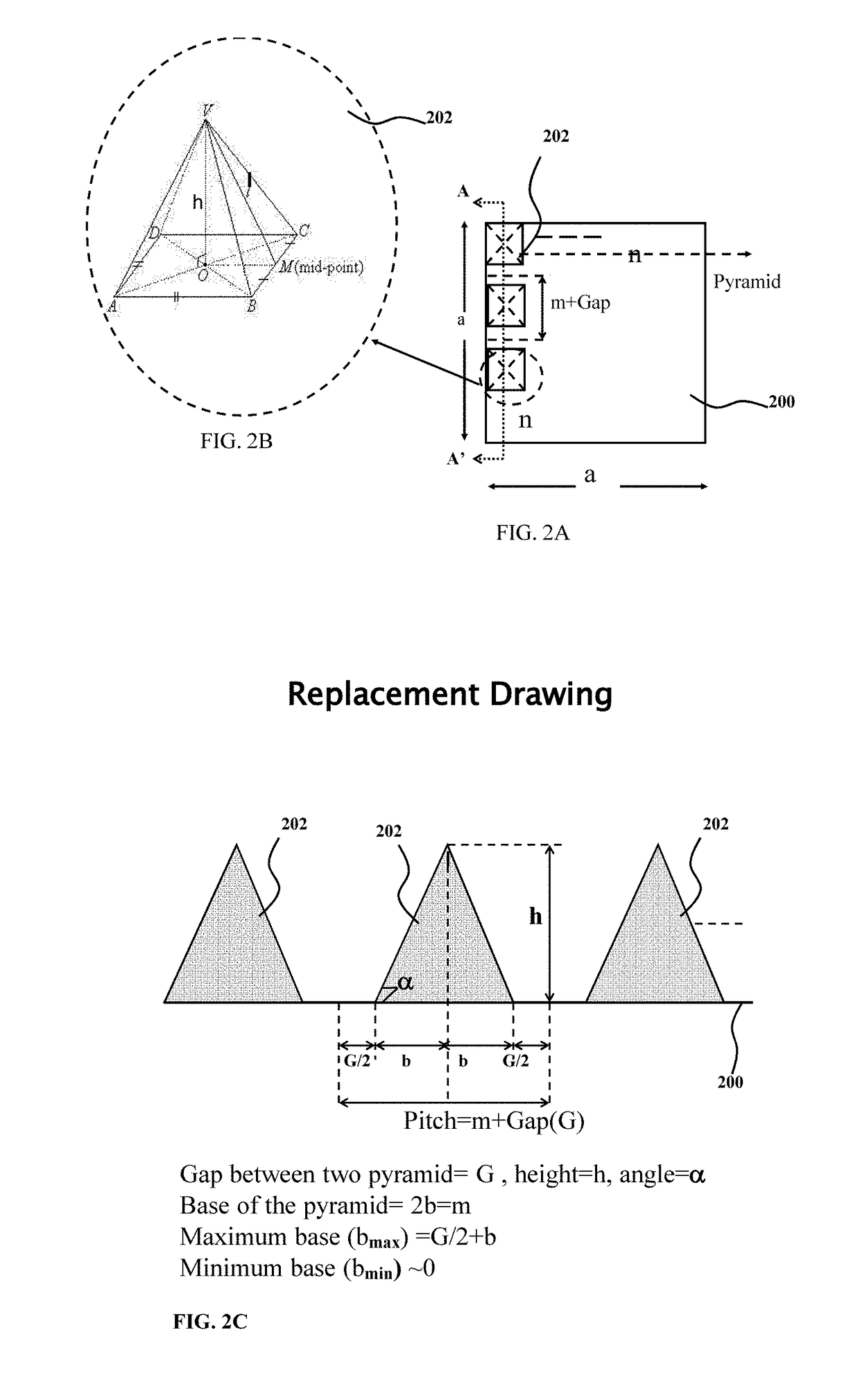High efficiency photovoltaic cells with self concentrating effect
a photovoltaic cell, high-efficiency technology, applied in the direction of basic electric elements, electrical equipment, semiconductor devices, etc., can solve the problems of reducing the conversion efficiency, the toxic nature of si-solar cells, and the inability to accept si-solar cells as alternative sources, etc., to improve the light reflection and increase the absorption
- Summary
- Abstract
- Description
- Claims
- Application Information
AI Technical Summary
Benefits of technology
Problems solved by technology
Method used
Image
Examples
Embodiment Construction
[0055]According to this present invention it is our object providing several photovoltaic cell structures which have (a) capability of higher surface area to volume, (b) self concentrating capability, (c) absorption of broad spectrum, and (d) pn-junction very close to the surface. These all capabilities would help to increase conversion efficiency as high as >60%. Before proceeding to give a detail explanation of the photovoltaic cell structure and their manufacturing, various structures including simulation results are given to show the benefits of the increasing the surface area (equivalent to junction area) and self-concentrating capability in the photovoltaic cell.
[0056]Reference is made in detail to the preferred embodiments of the invention. While the invention is described in conjunction with the preferred embodiments, the invention is not intended to be limited by these preferred embodiments. The contemplated embodiments for carrying out the present invention are described i...
PUM
 Login to View More
Login to View More Abstract
Description
Claims
Application Information
 Login to View More
Login to View More - R&D
- Intellectual Property
- Life Sciences
- Materials
- Tech Scout
- Unparalleled Data Quality
- Higher Quality Content
- 60% Fewer Hallucinations
Browse by: Latest US Patents, China's latest patents, Technical Efficacy Thesaurus, Application Domain, Technology Topic, Popular Technical Reports.
© 2025 PatSnap. All rights reserved.Legal|Privacy policy|Modern Slavery Act Transparency Statement|Sitemap|About US| Contact US: help@patsnap.com



